Golf can be complicated for beginners. A good 12-18 months can take for a person to get a good grasp of the basics. But nevertheless, golf has its own magic.
If you have learned much about the game, it’s time to grab a few golf clubs and practice.
A golf club is one of the most essential parts of golf, if not the most essential. But without proper knowledge and guidance, if you look into the manufacturer’s websites, you will be lost in confusion.
This brings us to different types of golf clubs that you need to know about. When you know what each of these clubs can do, their features, advantages and limitations, you can then go on to buy for yourself.
Table of Content [show]
Now it’s time for a little education on golf clubs. If you are a beginner, this one is very important for you. So we recommend have a peep and continue further.
The Golf club is a club in golf which is used to hit the ball. There are 6 types of golf clubs. Let’s have a quick look:
- Drivers
- Fairway woods (Drivers and fairway woods both are known as woods by the way)
- Hybrids
- Irons
- Wedges
- Putters
Components of a golf club:
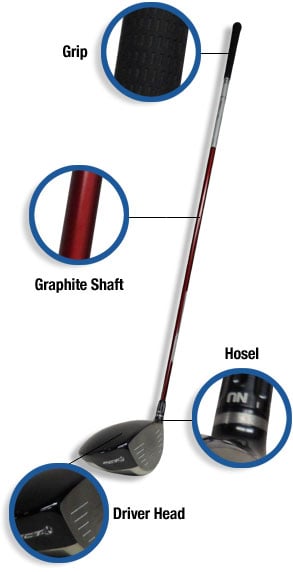
It has 4 components basically:
- Grip- The grip is the part which you will use to hold the club. It has a rubber surface for easy holding.
- Shaft- The shaft connects the Hosel and clubhead with the grip. It’s one of the most crucial part of the golf club.
- Hosel- Next comes the hosel. It helps to connect the shaft and clubhead. The lie angle of the club is controlled by the hosel.
- Clubhead- This is the last component of a golf club. It is the part that hits the ball. The overall control of the ball is dependent on the clubhead impact.
You may also like: Best Wedge Shaft
What are golf club numbers? You will see numbers associated with each golf club. These numbers represent the loft angle in clubs. Here is a list of club numbers you will be seeing your entire life:
- 3-, 5- woods
- 3-, 4-, 5-, 6-, 7-, 8-, 9- irons
- The pitching wedge and putter comes without any numbers.
Let’s get to know more…….
6 Types of Golf Clubs
1. Drivers
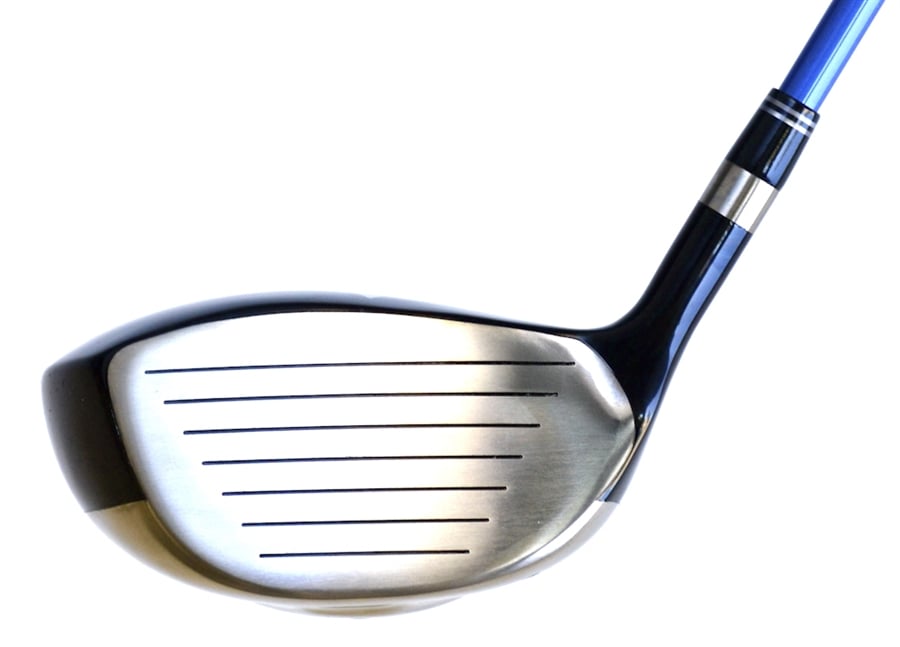
For beginners, know your driver first. Because you will use the driver for the tee shot.
Drivers are well known as woods. If you go through the history of golf, you will find that golf clubs were made of wood. Persimmon or hickory wood was used mainly. But modern golf clubs have little to do with woods.
Keeping in touch with history drivers are still known as woods. The modern drivers are made from anything ranging from steel, titanium, etc.
So what actually is the driver? To say very precisely, the “1 wood” is the driver. It has the lowest loft among all other golf clubs, and because of this, it has a specific characteristic and use. The loft angle can range from as low as 7 degrees to 11 degrees. This depends on the amount of height you want your ball to reach.
Specific characteristics of the driver
- Shafts of are mainly made of graphite.
- It’s the longest club in golf.
- It has the largest clubhead and hitting area among all other golf clubs. The largest and the most popular driver clubhead has a size of 460cc.
Should you get a large clubhead or small one?
If you are a beginner, always use the 460cc driver. This will help you minimize your missing off-center shots. Skilled and experienced players tend to use a driver with a lower cc like 440cc or less. With a lower cc driver, you can get better workability and shot range. If you believe you have the skills, then give it a go.
What is the driver used for?
Drivers are always for shot-making inside the tee box. Because of the long length it has, balls hit with the driver will cover a lot of distance. To precisely say, use it to hit the ball furthest. And when you are in the tee box, you want this specific feature as an advantage. So for a shot on Par 4 or Par from the tee box, drivers are best.
Many players even use iron golf clubs for the tee shot. For beginners, it is highly recommended to use the driver in the tee box.
2. Fairway Woods
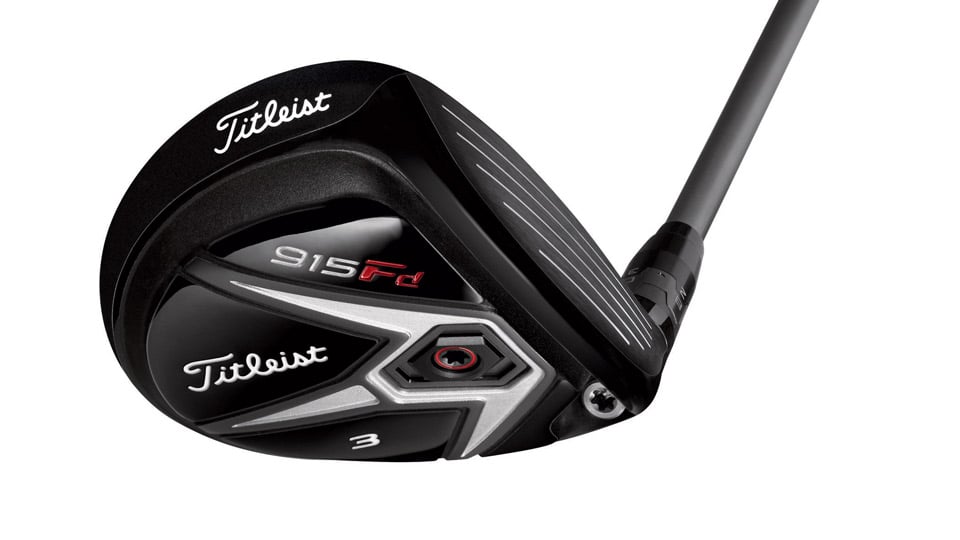
The fairway wood also falls in the wood category. Like the drive, fairway wood doesn’t have any association with wood.
You can call them “fairway metals” or “metal woods” as well. These are familiar names in golf. Fairway wood club essentially means 3, 5 and 7 wood club and also has other loft ranges in its category.
Like the drivers, fairway wood shafts are made of graphite. You can also see some players using steel shaft fairwood. Fairwoods look very similar to the driver, but their clubheads are slightly smaller.
One distinct feature of the fairwood clubhead is the flat face and bulbous shape. So, every time you make a shot with it, the clubhead slides over the grass.
Before buying your first golf club, observe the club pictures and get a feel of the way different golf clubs look.
What is the fairway wood used for?
Technically, you need the fairway wood for two reasons:
- When you have to make a shot with your iron club and speculate that it requires bit more distance, here the fairway wood comes into play. So, for ranges beyond the iron club, fairway wood is mostly used.
- Most players use the driver to make a shot from the tee box. But if you think you need more control, you can use the fairway wood. Fairway wood is good for short Par 4 tee shots and equally good for long Par 3 tee shots.
The lofts of these clubs range from 12-20 degrees. This means the shot you make with it will be higher and softer than other clubs. Additionally, you have better control of the ball so you can shape shots easily.
3. Hybrids
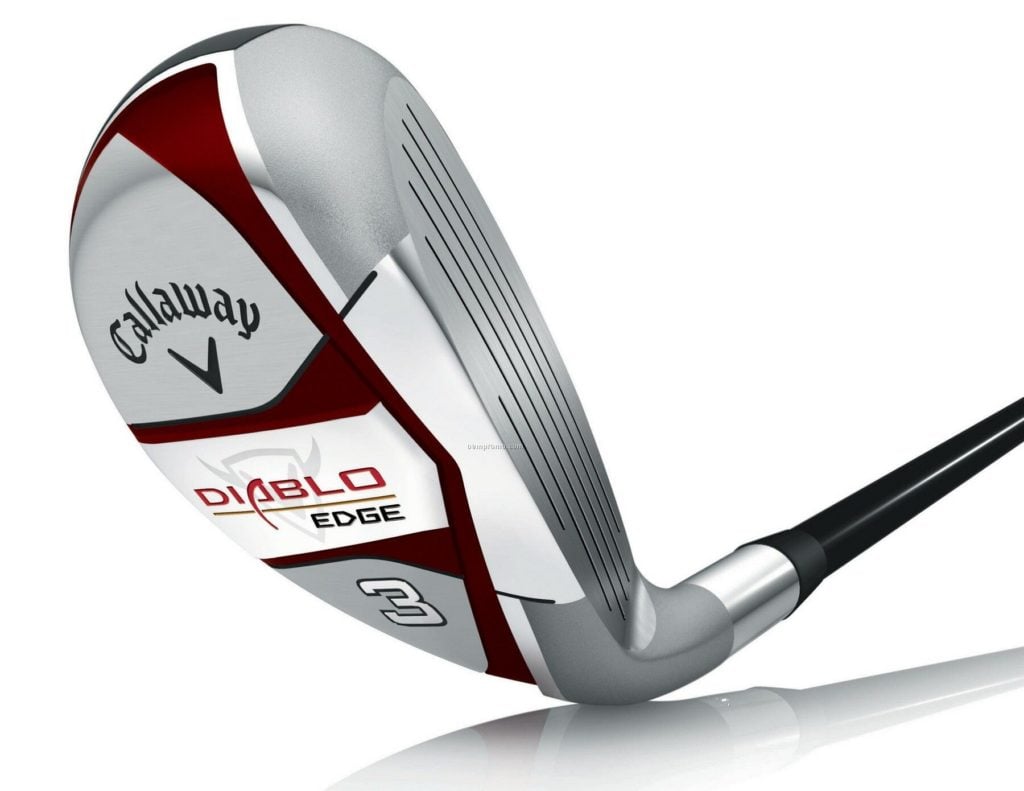
Let’s introduce you to the 21st-century golf club- “the hybrid golf club”. It’s a product of the modern golf game.
You may have heard of utility clubs as well. Hybrid clubs and utility clubs are terms used interchangeably. You can call by any one of the terms and golf enthusiasts will know what you are talking about.
The distinctive feature of the hybrid club is it has both the combination of wood and an iron golf club. The technical innovation implemented in these clubs provides a number of rare benefits which other clubs fail to offer. These are:
- Making airborne shots easily
- The chances of mishits are minimized
- Swing control and control of stroke direction
Hybrids have added so much advantage that you can replace many of the iron clubs in your golf bag. If you have 2, 3, 4 or 5 iron clubs, you can replace all of these with a hybrid golf club. You might hear people say that it’s easier to hit with a hybrid club. It’s because of its design and functionalities.
Should you buy hybrid golf clubs?
Hybrid golf clubs are most commonly known as the club for recreational golfers. It’s because of the ease at which you can make strokes.
But, professionals have slowly started to use them due to their added advantages.
With a hybrid club, you get a clubhead of a larger surface area. This precisely translates to hitting the ball from the “sweet spot”.
If you are looking for less drift on your golf balls, these clubs should be just about perfect. Because irons don’t allow much of a flexibility and ball control.
You can also tighten up your swing with the hybrid golf club. So, golfing in bunkers and forest like places becomes easier.
So, the final verdict is to get a hybrid golf club, it will upgrade your gameplay to a new level.
Interesting fact- The hybrid clubs doesn’t have its own self-distinctive numbering. Its numbering is based on the iron club it replaces. So, if you buy a hybrid club that replaces 4 iron, it will be called 4 hybrid.
4. Irons
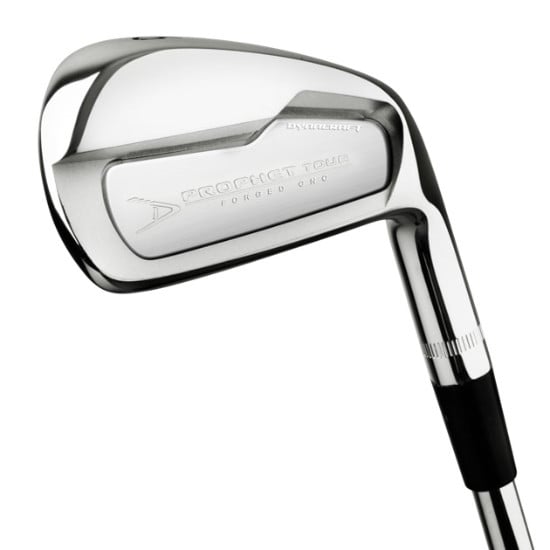
Why are irons used so much?
One of the highly used clubs in the golf arena is the iron golf club. This is because with an iron you can basically hit from any hole or any short or mid-range shots. Many players even have a go for long shots from the tee box with an iron. As the name suggests, clubheads of iron clubs are made of metal.
In irons, there are deeper grooves in its club heads which runs from toe to the heel. You may have heard or seen that iron clubs generate extra spin on the ball, this is mainly because of these grooves. So, when you can make a spin on the ball, controlling the shot becomes easy.
The iron club heads are thinner than other clubs like hybrids and woods. This simply means you get better accuracy with irons. Close shots need higher accuracy and using the iron in such shots will in most case provide positive results.
Types of golf irons
Irons typically come in two categories:
- ‘Cavity Back’
- ‘Cavity muscle Back’ or ‘Muscle Back’ aka ‘Blade’
Both these irons have their unique pros and cons. The cavity back has a hollow part in its rear clubhead. This unique technical feature creates a low center of mass and high trajectory. So when very skilled golfers can use them to bend shots around obstacles.
Buying iron clubs
You can generally buy iron clubs in a set of 6-8 of individual irons. In a typical iron set, you get:
- 3 iron
- 4 iron
- 5 iron
- 7 iron
- 8 iron
- 9 iron
- Pitching wedge
You might get confused when you read the specification on an iron club set. But here is an easy way to know what you are getting in that set. When you see 3-PW written on the set, then it essentially means you would get from 3 iron to 9 iron along with a pitching wedge. So same goes for 4-PW which means all clubs from 4 iron all included.
5. Wedges
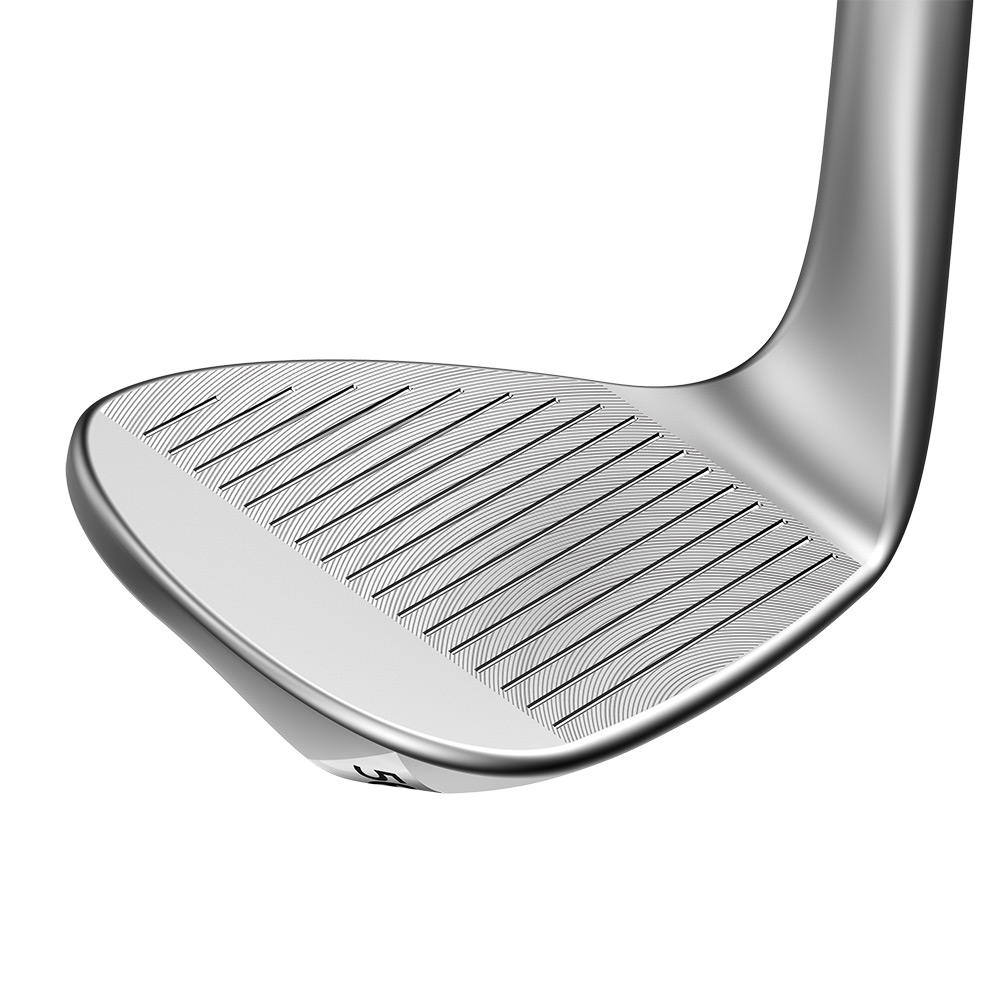
Wedges can simply change the outcome of the game because of its specific use and characteristics. These clubs are very identical to irons because of their look and build. Wedges can be distinguished from the irons by their lofts. These clubs have higher loft degrees ranging from 46 to 64 degrees. Find out the best golf wedges from here.
Why are the wedges used in the game?
When your ball lands on a sand or turf surface, wedges come into play. It has a very unique feature known as ‘bounce’. This is an angle created between the edge and sole of the club face.
So, a higher bounce means the club will bounce off the ground easily. So when you hit your shot from a sand surface your club will not be stuck in the ground. This allows chipping shots in the air, rather than covering distances.
Types of wedges
- Gap wedge
The gap wedge generally is used for a longer distance shot than the sand wedge. Awkward distances which cannot be covered by sand or pitching wedge can be easily covered by a gap wedge. Usually, it can help cover a distance of roughly 110 yards.
- Sand wedge
A sand wedge is the most commonly used wedge. It doesn’t enable golfers to hit long-distance shots. The main advantage of this wedge is that it helps to chip the ball up in the air. So, your sand bunker shots become easier with this.
- Lob wedge
This wedge is similar to the sand wedge except that it helps generate greater spin on a golf ball. With a greater spin, the ball can be manipulated in the greens like spinning back to the hole.
- Pitching wedge
Pitching wedge generally falls in the iron category as it is sold together with the iron set. It is typically known as the 10 iron.
6. Putters
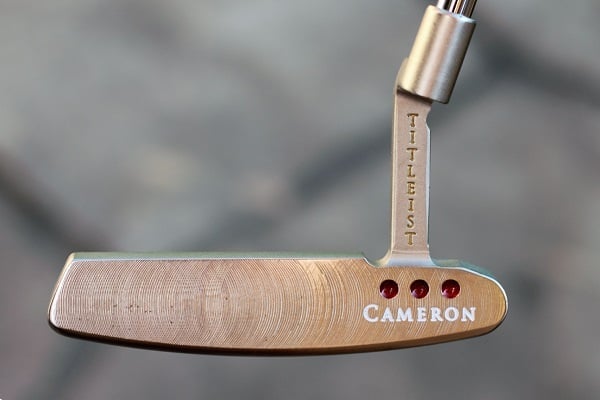
Arguably putter is the most important club in the golf game as it is used the most.
The putter has a flat clubface that is its distinctive feature. Putters are devoid of any lofts or bounce angles. Metals or plastics are used as inserts to give a smooth feel. So, when you are just about to put the ball in the hole, putters can help you roll the ball smoothly in the hole.
Types of Putter
- Blade Putter
For skilled and experienced golfers blade putter can be magical. It has a smaller head and is the most common putter available.
- Mallet Putter
The mallet putter has a larger and heavier head. This enables players from all range of skill levels to avoid mishits and get straighter shots. The Mallet putter is also more stable than blade putter. There are new putters in the market now which create more rolls on the ball, rather than skid. So, you can get a finer shot in the hole.
How Many Clubs Are Allowed In A Golf Set
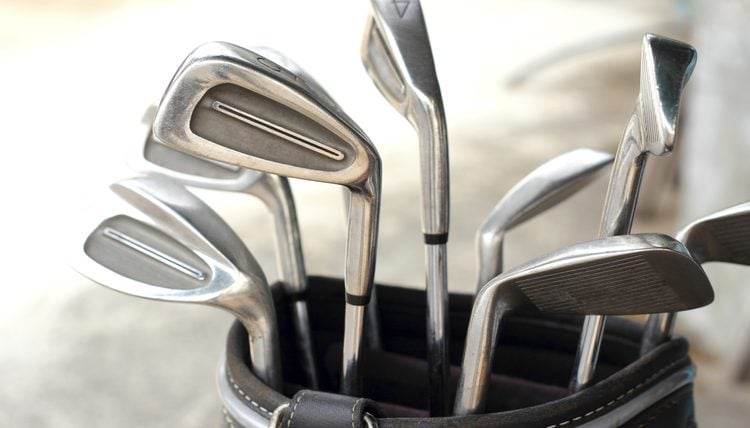
According to the rules of golf, you are allowed to carry at most 14 golf clubs in your bag. The restrictions are only on the number of clubs you can carry. But there is no restriction on the type of clubs. From driver to putter, you can have whatever you like. For a beginner you can have a club set of the following structure:
- Putter: from 33″ to 35″ as per your preference
- Wedge: You can get both SW and LW or any one of them
- Hybrid: 19-21 degrees
- Irons: you can get 4 PW or AW or SW
- Fairway woods: 15-17 degrees would be good enough
- Driver: 9.5- 13 degrees
This is a fairly positioned baseline set. It will keep changing as your ability and experience increases.
Golf Club Selection Chart
To be honest, there is no exact rule or standard chart that can help to choose your preferred club.
But as a general rule, the best way to choose a club is to know your hitting range first. So, if you know your shortest and longest range, from there, you can build up your golf club collection.
A number factor comes into play choosing a golf club like distance, placement, and conditions of play. But experimentation is the key here. The more you play, the more you will know.
How to choose the right golf club
- Use your shortest club and aim at a target.
- Measure the distance the ball covered from the hit to the spot it landed.
- Now try the same with 3 golf clubs and averaging the distance, you can get the yardage of your club.
Now from here on you can know what distance you can cover with other clubs. For example, if you have an 8 iron and it covers 130 yards for you, then a 7 iron will cover roughly 140-145 yards. So the basic rule that you can follow is the 10-15 rule which means your yardage will differ 10-15 yards from one club to the next.
Here is a chart that you can follow. It’s a hypothetical chart for a male golfer assuming his age is 40 years, having an average height and playing in the still wind.
| Golf club types | Distance (yards) |
| 4-iron | 170 |
| 5-iron | 160 |
| 6-iron | 150 |
| 7-iron | 140 |
| 8-iron | 130 |
| 9-iron | 120 |
| Pitching Wedge | 105 |
| Gap Wedge | 90 |
| Sand Wedge | 70 |
| Lob Wedge | 40 |
5 Top Golf Club Brands
Golf clubs come in various brands. Based on 2018 reviews, we present to you a shortlist of 5 brands that you can try for your golf clubs.
1. Callaway
Callaway golf clubs are the hot favorite in 2018. It has accumulated a number of awards from the Golf Digest’s Hotlist 2018. It was awarded gold rating for the best drivers, best fairway woods and best irons in 2018. For best Mallet putter and best blade putter, you have to look into some other brand. TaylorMade is an excellent choice for Mallet putter.
2. TaylorMade
According to the Golf Digest hot list, TaylorMade has two of clubs that made the list of best drivers, best fairway woods, best hybrids, and best Mallet putters.
3. Titleist
Titleist also had two clubs making the best club list on Golf Digest. But if you are looking for a good Blade Putter, this is the brand you are looking for.
4. Cleveland
Cleveland clubs also had their share of success in 2018. Two of their clubs gained gold ratings in Best wedge category and in best Blade category. For a good wedge, we would highly recommend looking for Cleveland clubs.
5. Mizuno
Mizuno is currently a hot favorite for irons. They got two gold and a silver in this category on the Golf Digest hot list in 2018. Business insider top rated the Mizuno Golf MP-5 Iron Set as one of the best iron club set to buy in 2018.
4 Tips To Take Care Of Your Golf Clubs
Golf clubs are expensive. So you would want to keep them in the best condition possible. Better you care for them, the longer they will last. Some of these tips will give you a starting point on your golf club care:
- Clean your clubface after every shot you make. If that means carrying a towel with you all the time, we would highly recommend to do it.
- When you hit at a driving range, it is best to make sure the clubs are cleaned afterward.
- Your towel can’t clean the grooves because it’s hard to get to it. Use a tee instead.
- With the sun over the head and your hands sweating, golf grips can become greasy. When you return home, use warm water and mild soap to clean the grip. It will last longer.


Very helpful
Very clear and concise. Thank you.
I’m an absolute beginner to the game but this information really helped me understand the reasoning for each golf club.